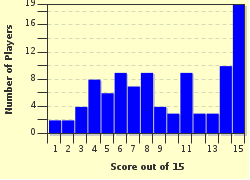Quiz Answer Key and Fun Facts
1. Running beneath Chicago's Uptown neighborhood are tunnels. These tunnels are infamous for their use in the jazz age as an escape route for gangsters such as Al Capone. Under which Uptown destination can you find the entrance to these tunnels?
2. Beneath the streets of Chicago's Loop you will find the remains of a massive underground system that served the city's largest buildings from 1906 to 1959. What was carried through these tunnels?
3. What major event in the history of science occurred in an underground racquetball court at the University of Chicago in 1942?
4. You may have seen Chicago's double-decker Wacker Drive featured in "The Blues Brothers" or "Batman Begins." Many have heard of "Upper Wacker" and "Lower Wacker," but for a short span there is actually a third, even deeper level! What is this lowest level of Wacker Drive called?
5. The Great Fire of Chicago destroyed what major landmark, formerly located at the corner of Ontario Street and McClurg Court in the area now known as Streeterville? (Hint: remember the theme!)
6. Chicago can be loosely divided into four major areas - the Loop, the North Side, the West Side and the South Side. The South side is by far the largest area of the city, stretching from just beneath the Loop all the way down to the Indiana border. Where does the Loop end and the South Side begin?
7. What item underfoot during Chicago's Great Fire of 1871 has been blamed for helping the fire to spread in such a rapid and destructive way?
8. Several Chicago museums offer exhibits that allow visitors to learn about some form of life underground or underwater. Which of the following *permanent* exhibits does not exist?
9. Millennium Park in downtown Chicago has been a major tourist draw since its opening in 2004. What lies underneath the Park?
10. The East-West running streets on the South Side of Chicago are generally numbered sequentially, the numbers increasing as you progress further away from the Loop. What is the southernmost numbered street in Chicago?
11. Erik Larson's book "Devil in the White City" introduced the world to the hideous story of H.H. Holmes, the first major serial killer in America. What was found in the basement of Holmes' "Murder Castle" in Chicago?
12. With an estimated completion date of 2019, the Deep Tunnel project is a major civic works program that started underneath Chicago and its surrounding areas in the 1970s. What is the purpose of this project?
13. Chicago's mass transit system is colloquially known as the "EL," short for Elevated Railway. Which two lines run underneath the city as well as above it?
14. Many utility lines run underneath the Chicago - water, gas, electric and telephone lines can all be found down there. However, only one of those systems is controlled entirely by the city government. Which utility department is manned entirely by the city?
15. The Willis Tower (formerly known as the Sears Tower) was known for decades as the tallest building in the world. How many floors are below ground level in this famous skyscraper?
Source: Author
kscleaves
This quiz was reviewed by FunTrivia editor
ozzz2002 before going online.
Any errors found in FunTrivia content are routinely corrected through our feedback system.
